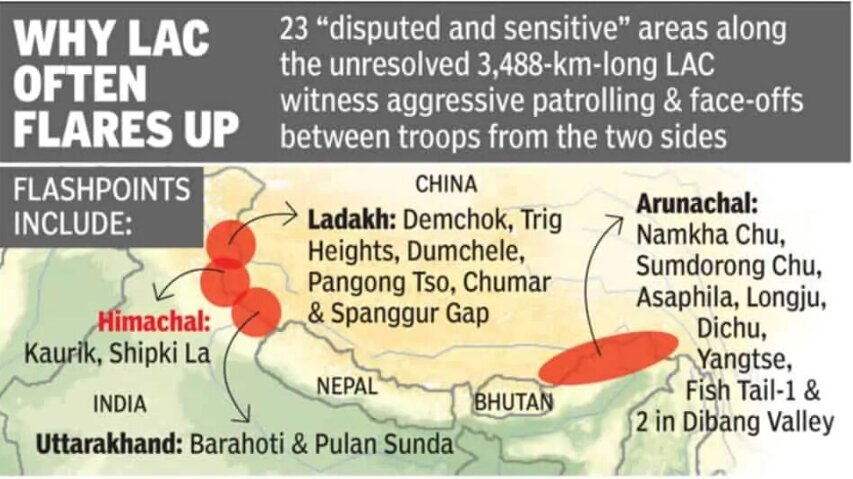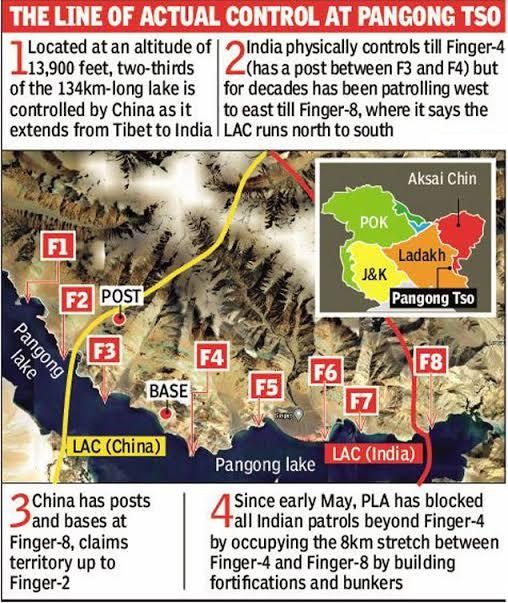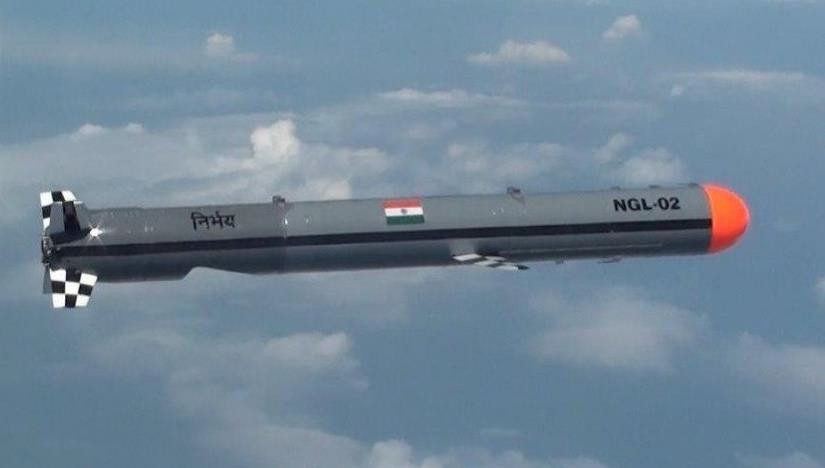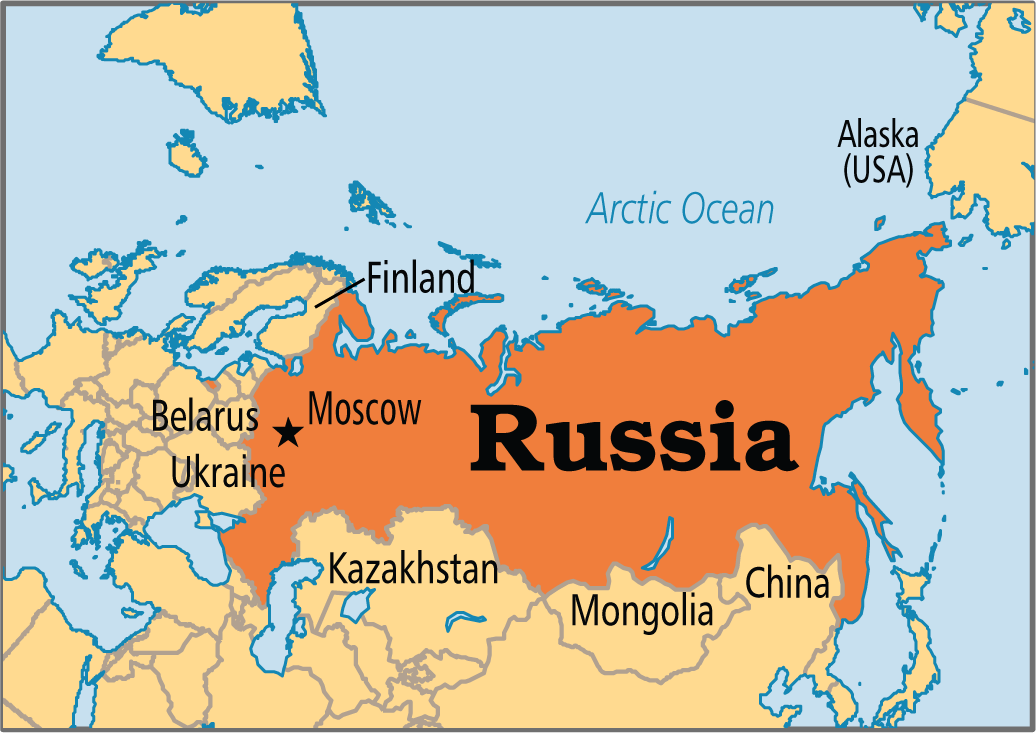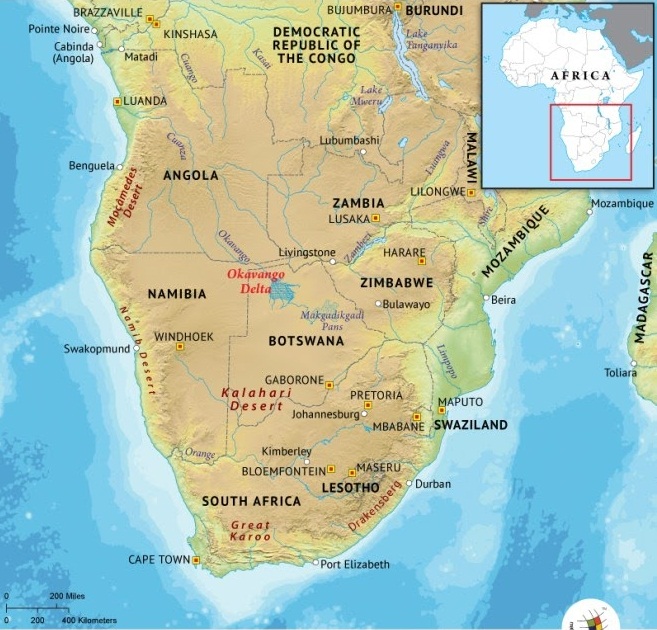International Relations
India-China Conflict
Why in News
Recently, the third round of Corps Commander-level talks was held between India and China.
- Both the sides emphasised on expeditious, phased and step-wise de-escalation in areas close to the Line of Actual Control (LAC) in Ladakh as priority.
Key Points
- Background:
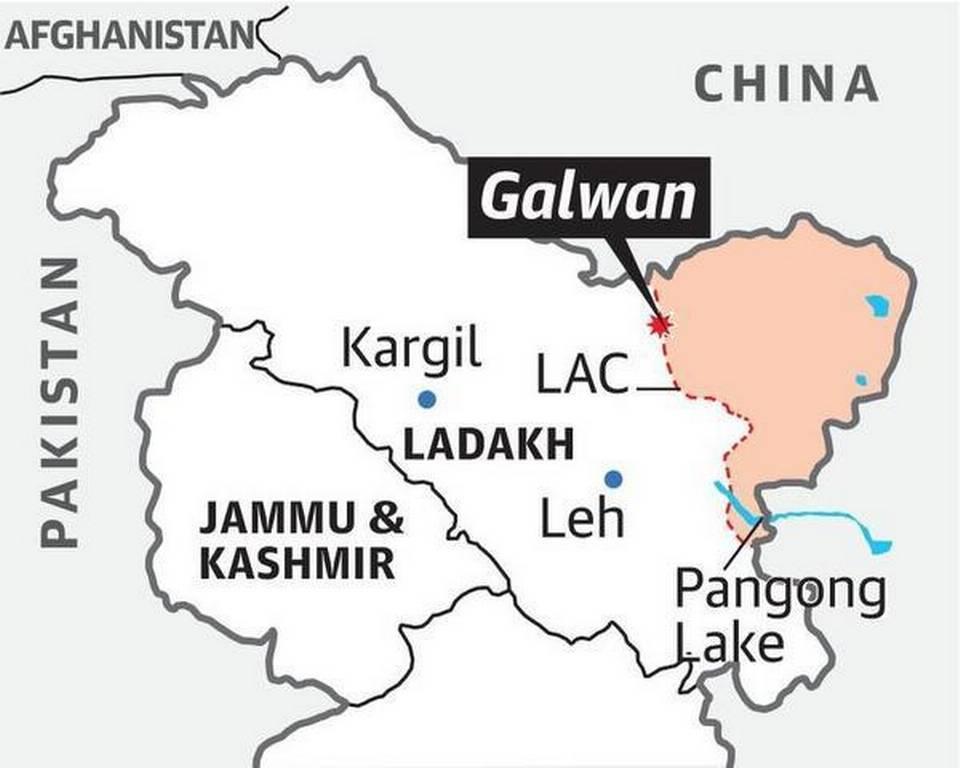
- In the previous two rounds, India sought restoration of the status quo as it existed before the standoff began in May 2020.
- Indian and Chinese troops scuffled at Pangong Tso in Ladakh on 5/6th May.
- After the first round of talks on 6th June, 2020, clashes occurred in Galwan Valley (Ladakh) that claimed 20 Indian soldiers’ lives and an unknown number of casualties on the Chinese side.
- While faceoffs and standoffs keep occurring on the LAC due to differences in perception on the alignment, there has been no instance of firing on the LAC since 1975.
- India and China fought a war in 1962.
- In the previous two rounds, India sought restoration of the status quo as it existed before the standoff began in May 2020.
- India’s Response:
- Military:
- India has moved in additional divisions, tanks and artillery across the LAC to match Chinese deployments.
- Further, India has approved the purchase of 33 Russian fighter jets and upgrades to 59 war planes at a cost of Rs. 18,148 crore.
- Economic:
- Citing the “emergent nature of threats” from mobile applications, including popular ones of Chinese origin such as TikTok, ShareIt, UCBrowser, and Weibo, the government has banned 59 apps.
- Further, India’s trade deficit with China fell to $48.66 billion in 2019-20 on account of the decline in imports. The trade deficit stood at $53.56 billion in 2018-19 and $63 billion in 2017-18.
- However, the tensions on the border, as well as the Covid-19 pandemic, have thrown light on India’s economic dependencies on China.
- India remains reliant on Chinese products in several critical and strategically sensitive sectors, from semiconductors and active pharmaceutical ingredients to the telecom sector, where Chinese vendors are involved not only in India’s 4G network but in on-going 5G trials as well.
- Foreign Direct Investment (FDI) from China in India has dipped to $163.78 million in 2019-20 from $229 million in 2018-19.
- In April 2020, the Indian government tightened FDI norms coming from the countries which share land borders with India. Government approval has been made mandatory.
- Military:
- China’s Reaction:
- It has described the app ban action as “a deliberate interference in practical cooperation” between the two countries. China’s State media has warned of economic repercussions, such as affecting outbound Chinese investment into India.
Possible Reasons Behind Increased China’s Deployment at the LAC
- India’s decision to strengthen its border infrastructure (Darbuk-Shyok-Daulat Beg Oldie road).
- India’s United States tilt (e.g. Quad) amid US-China tensions.
- China views India’s assertions regarding Gilgit-Baltistan, as an implicit attack on the China-Pakistan Economic Corridor (CPEC), China’s flagship programme.
- China’s growing assertiveness over the South China Sea.
- Political and economic tensions within China due to Covid-19 pandemic.
- India being a growing power in Asian region.
Line of Actual Control
- Demarcation Line: The Line of Actual Control (LAC) is the demarcation that separates Indian-controlled territory from Chinese-controlled territory.
- LAC is different from the Line of Control (LoC) with Pakistan:
- The LoC emerged from the 1948 ceasefire line negotiated by the United Nations (UN) after the Kashmir War.
- It was designated as the LoC in 1972, following the Shimla Agreement between the two countries. It is delineated on a map signed by the Director General of Military Operations (DGMO) of both armies and has the international sanctity of a legal agreement.
- The LAC, in contrast, is only a concept – it is not agreed upon by the two countries, neither delineated on a map or demarcated on the ground.
- Length of the LAC: India considers the LAC to be 3,488 km long, while the Chinese consider it to be only around 2,000 km.
- Sectors Across the LAC:
- It is divided into three sectors: the eastern sector which spans Arunachal Pradesh and Sikkim (1346 km), the middle sector in Uttarakhand and Himachal Pradesh (545 km), and the western sector in Ladakh (1597 km).
- The alignment of the LAC in the eastern sector is along the 1914 McMahon Line.
- The McMohan line marked out previously unclaimed/undefined borders between Britain and Tibet.
- The middle sector is the least disputed sector, while the western sector witnesses the highest transgressions between the two sides.
- It is divided into three sectors: the eastern sector which spans Arunachal Pradesh and Sikkim (1346 km), the middle sector in Uttarakhand and Himachal Pradesh (545 km), and the western sector in Ladakh (1597 km).
- Disagreements:
- India's claim line is different from that of the LAC. It is the line seen in the official boundary marked on the maps as released by the Survey of India, including Aksai Chin (occupied by China).
- In China’s case, LAC corresponds mostly to its claim line, but in the eastern sector, it claims the entire Arunachal Pradesh as South Tibet.
- The claim lines come into question when a discussion on the final international boundaries takes place, and not when the conversation is about a working border i.e. LAC.
- Border Negotiations:
- Indian Prime Minister’s visit to China in 2003 led to the agreement on appointing Special Representatives (SRs) and, in April 2005, there was agreement on the political parameters and principles that would underpin negotiations.
- The aim was a comprehensive solution encompassing all three sectors. The agreed boundary would follow well-defined geographical features and respect the interests of the settled populations.
- During Indian Prime Minister’s visit to China in May 2015, the proposal to clarify the LAC was rejected by the Chinese.
- However, in the Wuhan (2018) and Mahabalipuram (2019) summits, both China and India had reaffirmed that they will make efforts to “ensure peace and tranquility in the border areas”.
- Indian Prime Minister’s visit to China in 2003 led to the agreement on appointing Special Representatives (SRs) and, in April 2005, there was agreement on the political parameters and principles that would underpin negotiations.
Relevance of Pangong Tso Lake
- Location: It is a long narrow, deep, endorheic (landlocked) lake situated at a height of more than 13,000 ft in the Ladakh Himalayas.
- Significance: It lies in the path of the Chushul approach, one of the main approaches that China can use for an offensive into Indian-held territory.
- Governance: It is overlooked by the Finger Area - a set of eight cliffs extending out of the Sirijap range (on the northern bank of Lake).
- India claims that the LAC is coterminous with Finger 8 but it physically controls area only upto Finger 4.
- Chinese border posts are at Finger 8, while it believes that the LAC passes through Finger 2.
Way Forward
- Detailed protocols are in place for troops to handle face-off incidents. The countries need to stick to the 2005 protocol and the 2013 Border Defence Cooperation Agreement.
- On 1st April, 2020, India and China completed their 70 years of diplomatic relations. Both sides should acknowledge that the situation is precarious, and that the recent days in particular have undone decades of painstakingly negotiated confidence-building mechanisms.
- For India, the first priority has to be to restore the status quo ante at the border as it existed in April. This will require both a display of military strength at the border by standing up to Chinese aggression, and diplomatic work by making it clear to China that its intervention will lead to heavy costs across all spheres of the relationship.
- India cannot afford to sever all its economic links with the world’s second-largest economy, even in the digital space. Chinese finance will help in sustaining India’s start-up economy. However, through Atmanirbhar Bharat Abhiyan, India can try to replace chinese products with domestic products in the sectors where it is possible. Further, it needs to boost up its economic relations with other countries.
International Relations
Italian Marines Case
Why in News
Recently, the Permanent Court of Arbitration (PCA) has published an extract of the final award of the ad-hoc tribunal constituted to settle disputes related to the United Nations Convention for the Law of the Sea (UNCLOS) regarding Italian marine Case between India and Italy.
- It has rejected India’s contention that the soldiers, who were accused of killing Indian fishermen, could be tried in Indian courts and ordered India to cease all criminal proceedings.
Background
- In 2012, Indian police had detained two Italian marines posted on oil tanker Enrica Lexie who had shot at two Indian fishermen on an Indian vessel, apparently mistaking them for pirates operating near the Kerala Coast.
- After three years, Italy moved the International Tribunal for Law of the Sea (ITLOS) seeking for two italian marines to stay in their own country during the trial process and also to stop India from going ahead with its criminal prosecution.
- At that time, India had set up a specially designated court, as ordered by Indian Supreme Court, to determine the applicability of jurisdiction.
- India’s National Investigation Agency had already slapped charges against the two Italians under sections of the Indian Penal Code, related to murder, attempt to murder, mischief and common intent.
- The ITLOS judgement of 2015 called on Italy and India to suspend all domestic prosecutions arising from the Enrica Lexie Case. It had also ordered not to initiate any steps that might jeopardize or prejudice the carrying out of any decision which the arbitral tribunal may provide.
- The matter led to a long freeze in diplomatic relations between India and Italy, which were reset only in 2016.
Key Points
- Judgements in Favour of India:
- The tribunal held that the actions of the Italian military officers breached India’s freedom of navigation under UNCLOS Article 87(1)(a) and 90.
- The tribunal also held that India is entitled for payment of compensation in connection with loss of life, physical harm, material damage to property and moral harm suffered by captain and crew of ‘St Antony’, the Indian vessel.
- Judgements in Favour of Italy:
- India had called on the Permanent Court of Arbitration (PCA) UNCLOS tribunal to adjudge and declare that PCA has no jurisdiction with respect to the case submitted to it by Italy. However, a majority of the court's five- member bench ruled 4-1 that it had jurisdiction in the matter.
- Italian position that the marines, being members of the Italian armed forces in the official exercise cannot be tried by Indian courts, was held and immunity was granted to Italian marine officials.
- Basis of the Judgement:
- The tribunal observed that India and Italy had concurrent jurisdiction over the incident and a valid legal basis to institute criminal proceedings against the marines.
- However, it also observed that the immunities enjoyed by the marines as State officials operate as an exception to the jurisdiction of the Indian courts and, hence, preclude them to judge the marines.
Permanent Court of Arbitration
- The Permanent Court of Arbitration (PCA) was established in 1899 and headquartered at the Hague in Netherlands.
- It is an intergovernmental organization dedicated to serve the international community in the field of dispute resolution and to facilitate arbitration and other forms of dispute resolution between States.
- It has a Financial Assistance Fund which aims at helping developing countries meet part of the costs involved in international arbitration or other means of dispute settlement offered by the PCA.
Way Forward
- India has taken note of the Award and will be following with relevant entities on the matter and regulatory framework established by the Government.
- Further, increasing awareness about the incident and treating it as a lesson for Indian diplomacy would help India to handle future challenges better.
Social Justice
Under-Reporting of Diseases due to Pandemic
Why in News
According to information on weekly outbreaks available on the website of the Integrated Disease Surveillance Programme (IDSP), there have been unusually fewer instances of diseases other than Covid-19 due to the ongoing novel coronavirus pandemic.
- The IDSP issues weekly reports on disease outbreaks across the country based on its surveillance network that spans at least 600 districts.
Integrated Disease Surveillance Programme
- The Integrated Disease Surveillance Programme (IDSP) portal is a one stop portal which has facilities for data entry, view reports, outbreak reporting, data analysis, training modules and resources related to disease surveillance.
- It was launched by the Ministry of Health and Family Welfare, in assistance with the World Bank, in 2004.
Key Points
- Current Scenario:
- The latest weekly report available on the IDSP website from Week 12 (March 16-22) of 2020 records a mere 6 disease alerts across the country.
- An alert is when a sizable number of cases from a region are reported.
- The six alerts include a case of Crimean-Congo Hemorrhagic Fever, three cases of chickenpox and a case each of dengue and food poisoning.
- In Week 11 of 2020, there were 28 alerts, 12 of which were for Covid-19.
- However, after 3rd May 2020, there is again an increase in reports of other diseases but the latest data suggests that it hasn’t completely normalised as compared to previous years,
- The latest weekly report available on the IDSP website from Week 12 (March 16-22) of 2020 records a mere 6 disease alerts across the country.
- Past Scenario:
- In the same week in 2019, there were 17 alerts; in 2018, there were 28; and in 2017, there were 45.
- However there are no records in 2020 after week 12, that is after March 22.
- Reasons for Under-Reporting:
- Lockdown and the behavioural change due to Covid-19..
- Presence of only testing and treatment for Covid-19 available at government healthcare facilities.
- IDSP faces a manpower crunch in the middle of a pandemic.
Way Forward
- The neglect of other diseases has been observed by a reduction in the notifications of fresh tuberculosis infections and a general decline in claims under the Ayushman Bharat health insurance scheme.
- It’s debatable how useful this would be to improve Covid-19 surveillance, but it is essential in improving overall surveillance as well as providing timely updates about present infections.The pandemic needs serious focus, but India cannot afford to ignore other diseases and infections.
Governance
Privatisation of Railways
Why in News
Recently, the Ministry of Railways has taken the first step towards privatisation of railways by inviting Request for Qualifications (RFQ) to private players for operation of passenger train services.
Key Points
- Privatisation Project:
- Under this at least 151 modern trains will be introduced and 109 pairs of routes will be planned out for private train operations.
- Train sets have to be brought by private operators and maintained by them.
- Fares in private trains will be competitive and prices on other modes of transport like airlines, buses have to be kept in mind while fixing the fares
- Private participation in passenger train operations will only be 5% of the total operations of Railways. 95% of trains will still be run by Indian Railways.
- The project will bring private sector investment of about Rs. 30,000 crore.
- Reason Behind Privatisation:
- To develop India’s railway infrastructure to provide travel services to all its passengers.
- According to the 2019-20 data, the Railways ferried 8.4 billion (840 crore) passengers in 2019-20, about five crore passengers could not be accommodated, meaning their wait-listed tickets were dropped.
- During the busy seasons/summer season nearly 13.3% passengers were not able to get confirmed reservations.
- Induction of modern technology and reduction in transit time and the demand-supply deficit in train tickets.
- To develop India’s railway infrastructure to provide travel services to all its passengers.
- Benefits:
- Confirmed tickets and faster trains for passengers.
- Trains would run faster and would be safer and provide more facilities.
- Reduction in maintenance cost of train coaches.
- The train coaches now required maintenance after they ran 4,000 km, but modern coaches would need maintenance after every 40,000 km or once or twice in 30 days.
- Reduction in railways loss. Currently, the railways makes losses in passenger services.
- Provide revenue to railways for future operations.
- The private entity will pay the Railways fixed haulage charges, energy charges as per actual consumption and a share in gross revenue determined through the bidding process.
- RFQ had been issued under the Make in India policy. So the coaches would have to be manufactured in India.
- This will create jobs and utilisation of local components in manufacturing.
- Issues Involved:
- There is fear that it will lead to increase in fair prices of rail travel and job losses.
- It will harm the interest of marginalised communities (Scheduled Castes, Scheduled Tribes and Other Backward Classes), who get reservation under the government jobs.
- Currently there is no reservation in private sector employment.
Way Forward
- Privatisation of railways operations will require a new institutional framework where infrastructure will remain as a government's monopoly while there would be a market of service providers.
- Core Railways functions can be Corporatizied rather than privatized.
- Corporatization refers to the restructuring or transformation of a state-owned asset or organization into a corporation. These organizations typically have a board of directors, management, and shareholders.
- However, unlike publicly traded companies, the government is the company's only shareholder, and the shares in the company are not publicly traded.
- It is important to modernize the railways, so measures must be taken to reimburse the social costs speedily so that resources of the railways are better allocated and facilities are upgraded from time to time.
Governance
New Defence Weapons Approved
Why in News
Recently, the Defence Acquisition Council (DAC) approved several proposals that will boost the combat capabilities of all three services—Army, Navy and the Air Force.
Key Points
- Proposals: It includes buying of missile systems and additional fighter jets.
- The government will buy 33 aircrafts, which include 21 MiG-29s from Russia, 12 new Sukhoi-30 fighters from Hindustan Aeronautics Limited (HAL).
- It also includes upgradation of 59 MiG-29 jets.
- Under the missile system, the government will buy Pinaka ammunition, Astra Beyond Visual Range (BVR) air-to-air missiles, land-attack cruise missile (LACM) systems with a range of 1,000 km among others.
- The government will buy 33 aircrafts, which include 21 MiG-29s from Russia, 12 new Sukhoi-30 fighters from Hindustan Aeronautics Limited (HAL).
- Cost of Proposal: It will cost around Rs. 39000 crore. The acquisitions from Indian Industry will cost around Rs. 31,130 crore and rest acquisitions will be done from Russia.
- Pinaka Ammunition:
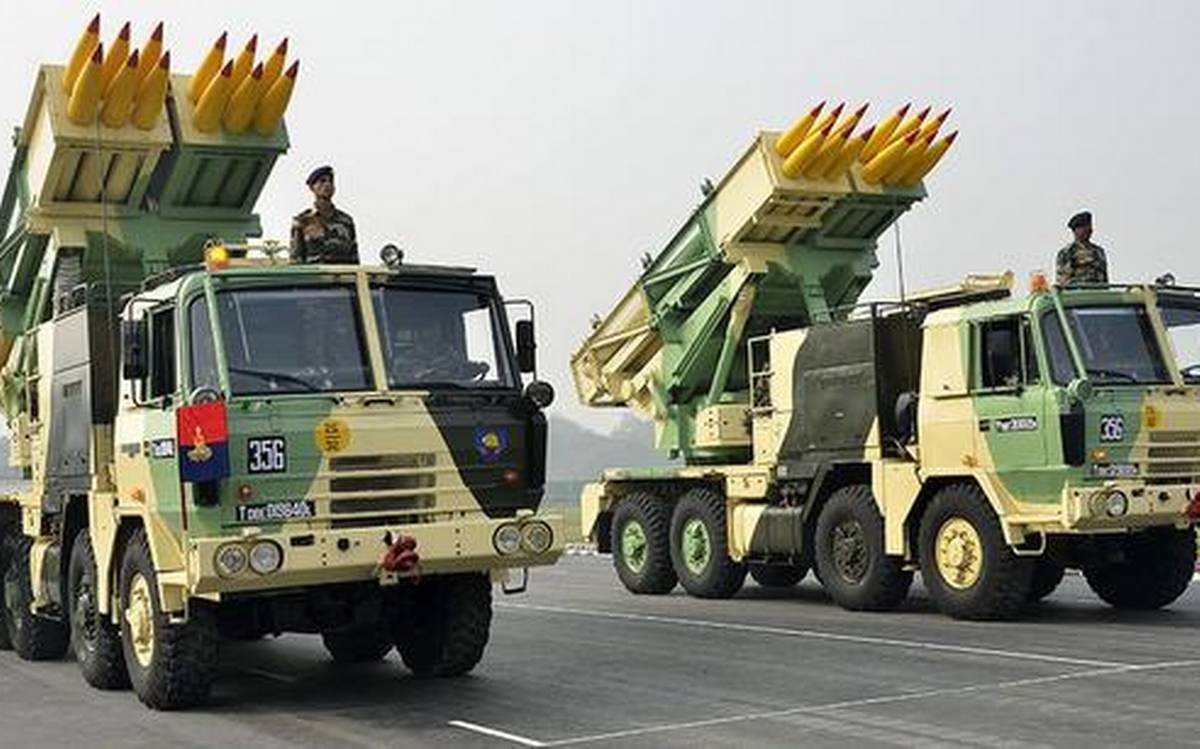
- It is an all-weather, indirect fire, free flight artillery rocket system developed by Defence Research and Development Organisation (DRDO).
- The Pinaka weapon system consists of Rocket, Multi Barrel Rocket launcher, Battery Command Post, Loader cum Replenishment Vehicle, Replenishment Vehicle and Digicora MET Radar.
- Astra Missiles:
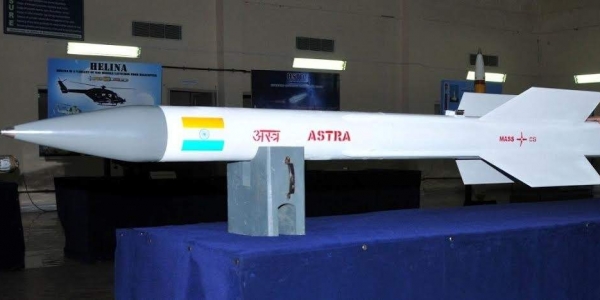
- Astra missile is developed by Defence Research and Development Organisation (DRDO).
- It is a Beyond Visual Range (BVR) class of Air-to-Air Missile (AAM) system designed to be mounted on fighter aircraft. It has capability to destroy the enemy targets which are beyond their visual range.
- The missile has all weather day and night capability and will serve as a force multiplier and immensely add to the strike capability of the Navy and Air Force.
- Long-Range Land Attack Cruise Missile Systems:
- It is developed by Defence Research and Development Organisation (DRDO).
- It is aimed at enhancing the firing range of the Brahmos missile from 400-500 km to 1000 km.
- Its features include aerodynamic configuration, vertical launch using solid booster, thrust vector control system, booster separation, in-flight wing deployment, in-flight engine start and long range way-point navigation system”.
- The proposed development of fully indigenous long-range land attack cruise missiles can greatly enhance the operational capability of services.
- MIG 29 Fighter jets:
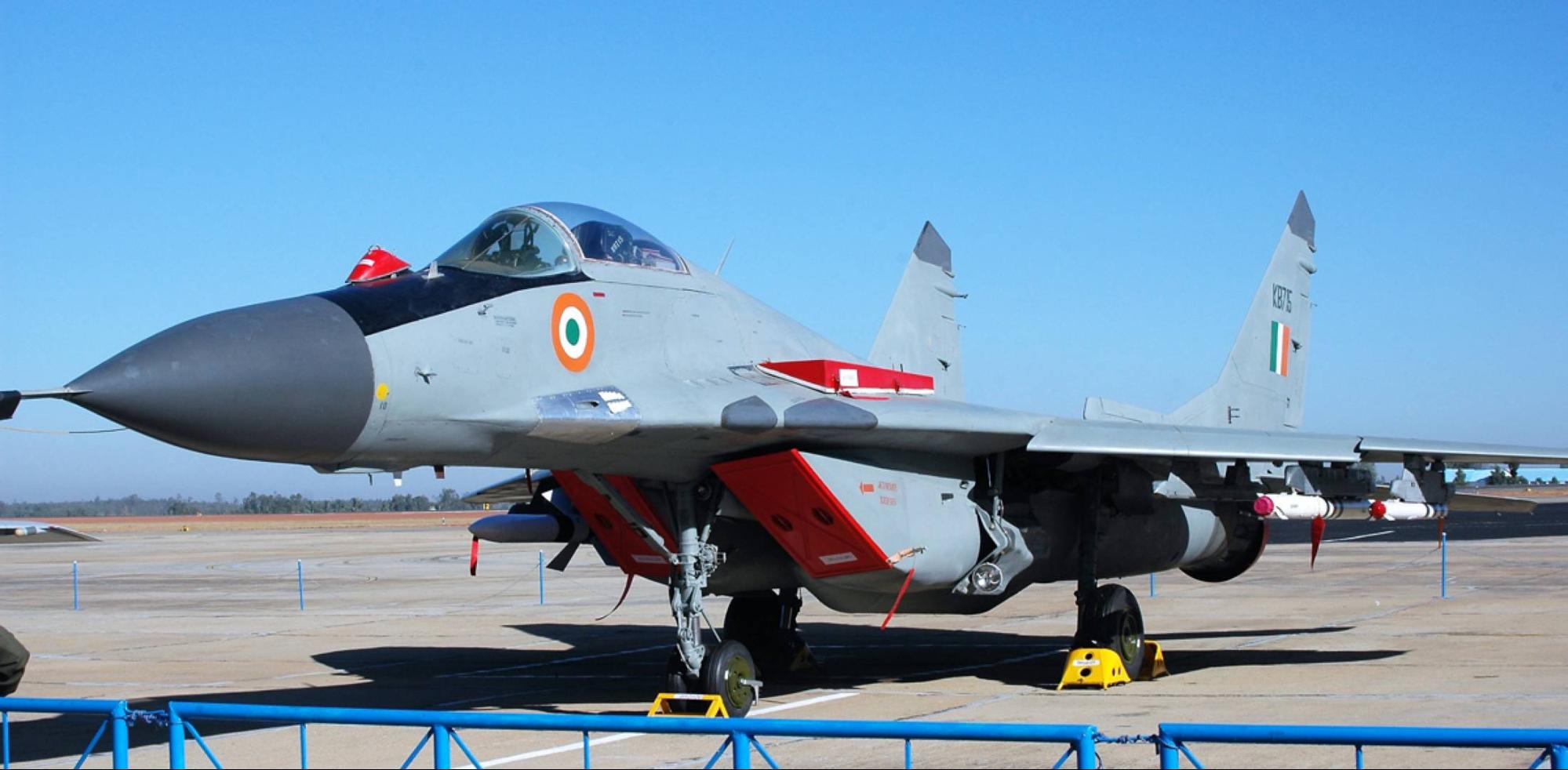
- It is a twin-engine, multirole fighter jet, developed by the Soviet Russia in the 1970s. It has been upgraded since.
- Su-30 MKI Fighter jets:
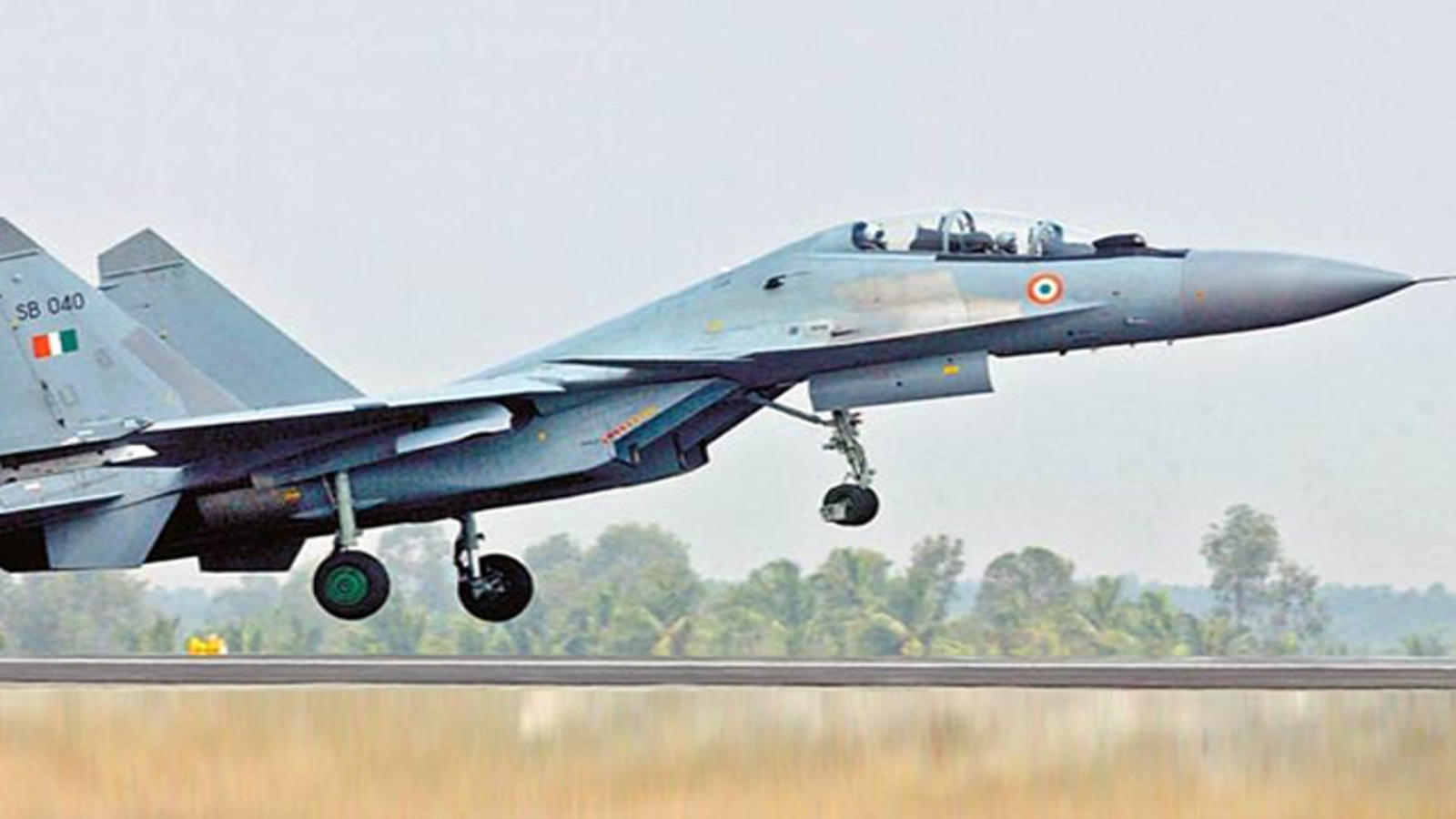
- The Sukhoi Su-30 is a twin-engine, two-seat supermaneuverable fighter aircraft developed by Russia's Sukhoi Aviation Corporation.
- It is a multirole fighter for all-weather, air-to-air and air-to-surface deep prohibition missions.
Defence Acquisition Council
- It is the highest decision-making body in the Defence Ministry for deciding on new policies and capital acquisitions for the three services (Army, Navy and Air Force) and the Indian Coast Guard.
- The Minister of Defence is the Chairman of the Council.
- It was formed, after the Group of Ministers recommendations on 'Reforming the National Security System', in 2001, post Kargil War (1999).
Indian Heritage & Culture
Dharma Chakra Day
Why in News
The Ministry of Culture, Government of India in partnership with International Buddhist Confederation (IBC) will celebrate the upcoming Asadha Poornima on 4th July, 2020 as Dharma Chakra Day.
Key Points
- The festivities would start off with chanting of prayers at Sarnath, Varanasi (U.P.) which will be livestreamed, following which the opening event will be shifted to the Rashtrapati Bhavan.
- The auspicious day of Asadha Poornima falls on the first full moon day of the month of Asadha as per Indian sun calendar.
- It is also known as Esala Poya in Sri Lanka and Asanha Bucha in Thailand.
- It is the second most sacred day for Buddhists after the Buddha Poornima or Vesak.
- The day marks Buddha's first teaching after attaining Enlightenment to the first five ascetic disciples (pañcavargika) on the full-moon day of Asadha at ‘Deer Park', Ṛiṣipatana in the current day Sarnath, near Varanasi, India.
- This teaching of Dhamma Cakka- PavattanaSutta (Pali) or Dharma chakra Pravartana Sutra (Sanskrit) is also known as the First Turning of Wheels of Dharma and comprised of the Four Noble Truths and Noble Eightfold Path.
- The Rainy Season retreat (Varsha Vassa) for the Monks and Nuns also starts with this day lasting for three lunar months from July to October, during which they remain in a single place, generally in their temples (Viharas/ Chaityas) dedicated to intensive meditation.
- The day is also observed as Guru Poornima by both Buddhists and Hindus as a day to mark reverence to their Gurus.
Guru Purnima
- According to the Hindu calendar, Guru Purnima generally falls on a full-moon day in the Hindu month of Ashadh.
- It is dedicated to Maharshi Veda Vyasa, the sage who is believed to have edited the sacred Hindu text, the Vedas and created the 18 Puranas, Mahabharata and the Srimad Bhagavatam.
- For Buddhists, the festival marks the first sermon of Lord Buddha, which is said to have been delivered at Sarnath, Uttar Pradesh, on this very day.
- It is also believed to mark the onset of monsoons.
Buddhism and Diplomacy
- Buddhism has become an important tool in contemporary geopolitics particularly in Asia, and it has become increasingly evident that whoever controls the Buddhist discourse and activities will sway influence in Asia.
- The celebration of Dharma Chakra Day is being pushed as an event to show India’s strong Buddhist heritage amid tensions with China. It will see the virtual participation of leaders from major Buddhist countries, except China.
- The timing of the event is particularly important, because this is when both countries would like to resurrect their linkages with others. To show that like-minded countries are coming together sends across a message. What is however important is that one has to put in sustained effort at this, and have a relook at India-China policy with strategic cultural moves.
- The Central Tibetan Administration has asked Tibetan Buddhists to participate in the online event in large numbers to “support and appreciate” the effort.
- The Central Tibetan Administration (CTA) is an organisation headquartered in McLeod Ganj, Dharamshala, India. It is also referred to as the Tibetan Government in Exile which has never been recognized by China.
- The position of the CTA is that Tibet is a distinct nation with a long history of independence and it considers China's administration of Tibet as illegitimate military occupation.
- In addition to political advocacy, it administers a network of schools and other cultural activities for Tibetans in India.
- Meanwhile, the People’s Republic of China (PRC)'s World Buddhist Forum (WBF) has been hosting congregations of buddhist monks since 2005. China's extensive infrastructure investment in Lumbini, Buddha's birthplace in Nepal, is also seen as a strategic move to claim the Buddhist legacy.
Suggestions
- While Buddhism might have vanished from India as a religion practised by many people, it is still a critical part of India's civilisational ethos.
- There should be more buddhist corridors including Ladakh, Himachal Pradesh and Arunachal Pradesh, apart from Madhya Pradesh, Uttar Pradesh, Bihar, Gujarat and Andhra Pradesh.
- There could be nodal centres for people-to-people exchanges for those who come from South Korea, Taiwan and other countries.
- Although no other country can take Buddhist leadership away from India, the status of Buddhism in India is quite different now.
- India has not been promoting its own Buddhist streams or strengthening the original Buddhism.
- Promoting anything else or any other brand than its own limits a genuine outreach. Promoting anything else becomes a subject of contestation, and the essence of using Buddhism as a diplomatic card gets lost.
Way Forward
- There are also hundreds of millions of Chinese who have a deep devotion towards Buddhism. India needs to reach out to those Chinese constituencies too, for long term gains. After all, India conquered the hearts and minds of Chinese for 200 years without sending a single troop to China.
International Relations
Constitutional Amendments in Russia
Why in News
The Russian citizens have supported a set of constitutional amendments including continuation of presidency by Vladimir Putin in a recently held referendum in the country.
- The referendum also included clauses related to the reorganisation of the government, introducing a higher minimum pension and wages, a ban on gay marriage, restricting top officials from holding dual citizenship, enshrining “faith in God” as a core value and emphasising the primacy of the Constitution over international treaties and rulings.
- A referendum is a direct and universal vote in which an entire electorate is invited to vote on a particular proposal and can have nationwide or local forms.
- It supports direct democracy.
- The referendum was originally planned for April 2020 but was delayed due to the coronavirus outbreak.
Key Points
- Clause for Continuation of Presidency Term:
- The Russian Constitution bars more than two consecutive presidential terms.
- The new Constitution doesn’t change the two-term limit in theory, but in practice, it resets Mr Putin's terms so that it will be the first election under the new Constitution for him, to be held in 2024.
- According to the referendum, the current President of Russia Vladimir Putin can stay in power for two more six-year terms (until 2036) after his term expires in 2024.
- Significance:
- The amendments have enhanced the powers of the State Council, an advisory body. Overall, the changes will help to tighten his grip over Russia.
- The proposed changes had already been approved by Parliament and the Supreme Court but it was put to vote to gain legitimacy and popular approval.
- The preliminary results released by the Election Commission showed that almost 78% of voters endorsed the amendments, while 21% voted against them. Some 65% voters had turned up to cast their ballots.
- Background:
- Mr. Putin became President for the first time in 2000. After completing his two terms, he swapped the presidency with Mr. Dmitry Medvedv. During the Medvendv presidency, Mr. Putin remained the centre of power as Prime Minister.
- Mr. Medvedv served one term and stepped aside for Mr. Putin to assume the presidency again. Thus, Mr. Putin is now into the second term of his second stint as President, which will expire in 2024.
- If Mr. Putin stays in power for two more terms, he will be the longest serving Russian leader since Peter the Great.
- The Tsar, who built the Russian Empire, was in power for 43 years until his death in 1725.
- Mr. Putin became President for the first time in 2000. After completing his two terms, he swapped the presidency with Mr. Dmitry Medvedv. During the Medvendv presidency, Mr. Putin remained the centre of power as Prime Minister.
- Challenges Ahead:
- According to the International Monetary Fund (IMF), the economy hasn’t expanded in dollar terms for a decade. The Fund estimates the Gross Domestic Product (GDP) to shrink by 6.6% in 2020.
- The pandemic affecting local businesses and the falling oil prices reducing exports revenue.
- In foreign policy, Russia’s relationship with the West remains troublesome. The sanctions imposed on Russia after the annexation of Crimea in 2014 are still in place.
- Though Russia managed to prevent the collapse of the Syrian regime after its intervention in the civil war, the Syrian crisis is far from resolved.
- Russia also faces allegations of interference in the elections of other countries.
Way Forward
- Earlier, Mr. Putin had inherited a Russia that was in an economic free fall.
- Now Mr. Putin needs to rebuild the state and the economy and restore some of the country’s lost global clout.
Important Facts For Prelims
Elephant Deaths in Botswana
Why in News
In the past two months, hundreds of elephants have died mysteriously in Botswana’s Okavango Delta.
Key Points
- The cause of the deaths is yet to be established. However, poaching has been ruled out since the dead elephants were found with tusks.
- Several live elephants appeared to have been weak, lethargic and skeletal, with some showing signs of disorientation, difficulty in walking or limping.
- Okavango Delta: It is one of the very few major interior delta systems that do not flow into a sea or ocean.
- This delta comprises permanent marshlands and seasonally flooded plains.
- The delta covers part of Kalahari Desert and owes its existence to the Okavango (Kavango) River.
- It is home to some of the world’s most endangered species of large mammal, such as the cheetah, white rhinoceros, black rhinoceros, African wild dog and lion.
- Botswana: It is a landlocked country in Southern Africa. Its 70% territory is covered by Kalahari Desert.
- Botswana has the world’s largest elephant population, estimated to be around 130,000.
- It is Africa's oldest continuous democracy.
Important Facts For Prelims
Drug Discovery Hackathon 2020
Why in News
Recently, the government has launched Drug Discovery Hackathon 2020 (DDH2020), a first of its kind national initiative for supporting the drug discovery process.
- The objective is to identify drug candidates against SARS-CoV-2 (Covid-19) by in-silico drug discovery.
In-Silico Drug Discovery
- In-Silico is an expression used to mean “performed on computer or via computer simulation.”
- In-Silico drug discovery process is thus the identification of the drug target molecule by employing bioinformatics tools.
- Drug target molecules generally include DNA, RNA and proteins such as receptors, enzymes etc.
- Identification of drug target molecules help in knowing their pharmacological relevance to the disease under investigation.
- Bioinformatics is the application of computational technology (such as Artificial Intelligence/Machine Learning) to handle the rapidly growing repository of information related to molecular biology.
Key Points
- Joint Initiative: DDH2020 is a joint initiative of the Ministry of Human Resource Development (MHRD), All India Council for Technical Education (AICTE) and the Council of Scientific and Industrial Research (CSIR) and supported by partners like Centre for Development of Advanced Computing (CDAC), MyGov and private players.
- Participants: Researchers/Faculty across the world, students studying in India and abroad.
- Functioning:
- It will primarily focus on computational aspects of drug discovery and will have three Tracks.
- Track-1 will deal with computational modelling for drug design or identifying ‘lead’ compounds from existing databases that may have the potential to inhibit SARS-CoV-2.
- Track-2 will encourage participants to develop new tools and algorithms using data analytics and AI/ML approach for predicting drug-like compounds with minimal toxicity and maximal specificity and selectivity.
- Track 3 will only deal with novel and out-of-the-box ideas in this field.
- Participants will submit their ideas online after which the CSIR and other labs will work towards executing them.

